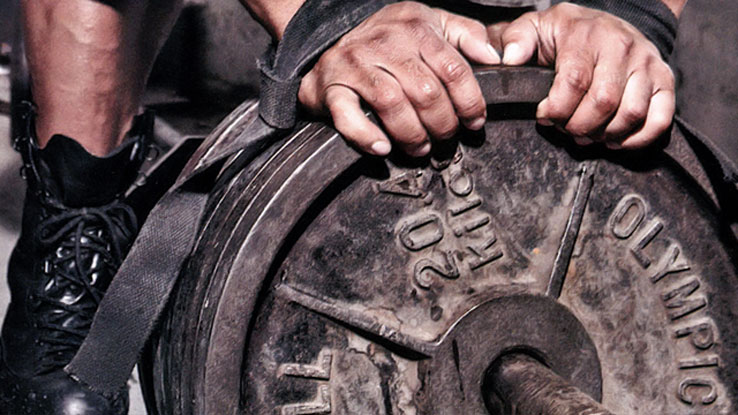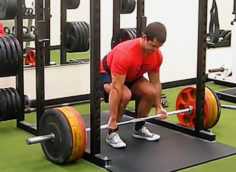Trying to build muscle? Kettlebells probably aren't the star of your hypertrophy plan. But they should be.
All it takes to make serious gains is to come up with 10-15 exercise variations that you enjoy and can hit hard. Can't think of any? Start simply. Pick exercises that involve less of a learning curve.
You could go well beyond these, but if you're a meathead like me, the basics will serve you well.
You'll see results quickly when you do these with either high amounts of volume or load. The effects are similar to that of a reverse hyper which places a lot of tension on the glute complex, spinal erectors, and hamstrings.
Additionally, the anterior core experiences a fair amount of contraction at end range. And you'll get a huge pump in the forearms and traps. The Russian swing really is a full-body movement.
The catch? Stronger folks usually won't have access to a heavy enough kettlebell to get the job done, which is why you may want to add a band for resistance.
Keep in mind though, adding band resistance changes the intent of the movement, increasing the demand on fast-twitch fibers. While this isn't a bad thing, it may be harder to sustain this level of power output for bigger sets so changing the rep counts may suit you better.
Band-Resisted Russian Swing
Do 100-200 total reps and increase volume over time. Or do 10 sets of 10 reps with band resistance. Try an EMOM or "every minute on the minute" approach.
Another great option if you don't have access to a particularly heavy kettlebell is to add another 'bell to the mix. This provides somewhat of a unilateral effect with two working limbs instead of one.
The contraction of the glutes at the top of each rep may be stronger with this variation compared to the last.
Go for more load and shoot for around 100 total reps.
This is a challenging squat variation and likely one you've never tried before. It's definitely not for beginners. In fact, you may find this version more challenging than its barbell counterpart. By using the box and breaking up the phases of the lift, you'll add an even greater level of difficulty.
This is a great variation to use if you're deloading from the barbell, which is something you'll want to do from time to time.
It can also improve anterior core function when squatting. You know how coaches love to say, "Keep your abs tight," right? With this variation, there's no almost no choice to NOT do so!
Do 4-6 sets of 8-10 reps using a 13-15 inch box.
People often do this variation incorrectly by placing the 'bells on their shoulders. But that'll defeat the purpose of what you're trying to achieve, which is single-limb strength while keeping the midline engaged. So don't let the kettlebell rest on your body.
Do 3-4 sets of 20-30 steps.
It's a nice change from its dumbbell counterpart because of the placement of the load and the higher demand on the forearm flexors. The grip of the kettlebell is fatter than that of a standard dumbbell.
Do 3-4 sets of 8-10 reps.
This works best in a conditioning setting. Why? Because it's a globally demanding movement that's more challenging for the respiratory system than it is for local musculature.
While it's "higher skill" than any of the other listed movements, the learning curve is still not nearly as long as its barbell counterpart. I'd recommend learning each move separately first though.
Do three rounds for time:
- 15 Double Kettlebell Clean & Jerk
- 500 Meter Row
Pressing overhead has become a controversial topic and, for the record, most people are better suited to NOT press overhead.
But with kettlebells, the load is in a better position than it is when using a barbell. This keeps the shoulder joint centered. And most people don't need to go into an excessive amount of spinal extension to gain range of motion, particularly at lockout.
Additionally, the unilateral component is exactly what more people need anyway, so this version will actually strengthen your overhead press.
Do 3-4 sets of 6-8 reps.
Get ready to be humbled. The biggest limiting factor with this exercise (which is almost why I decided NOT to share this one) is finding the right load. For most, you're going to need less than 25-pound kettlebells. I'm using 18-pounders in the video.
But if you do have access to a pair of lighter 'bells, this is an excellent version to train the top range of your bench press lockout while enhancing stabilization of the lats. This variation also forces you to keep your shoulder joint centrated which translates to better joint health.
Do 3-4 sets of 5-7 reps.
This adds an increased level of grip difficulty and an increased demand on the biceps. Plus it's a novel version of the one-arm row because of the placement of the load versus a standard dumbbell.
Do 4-5 sets of 8-10 reps each side.
This teaches you how to brace and create 360 degrees of tension, which is paramount to staying safe with big lifts like the squat and deadlift.
In this case, I've opted for the single-arm front rack carry simply because I see too many people do this incorrectly. When performing this unilaterally you can use the opposite hand to provide a tactile cue to keep the abs tight and turned on.
Do 4-6 "reps" of 90 feet. Switch sides at 90 feet and return.
Whether your goal is strength and performance, or getting better at the "sport of fitness," kettlebells have a variety of benefits.
The fact that you can experience a novel stimulus during otherwise basic movements is important in avoiding stagnation. It's also important in keeping you interested and excited to train each day.





